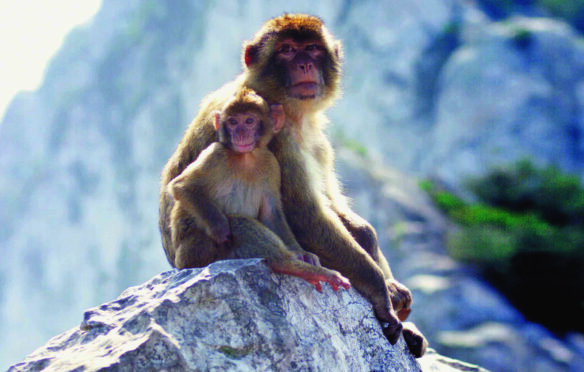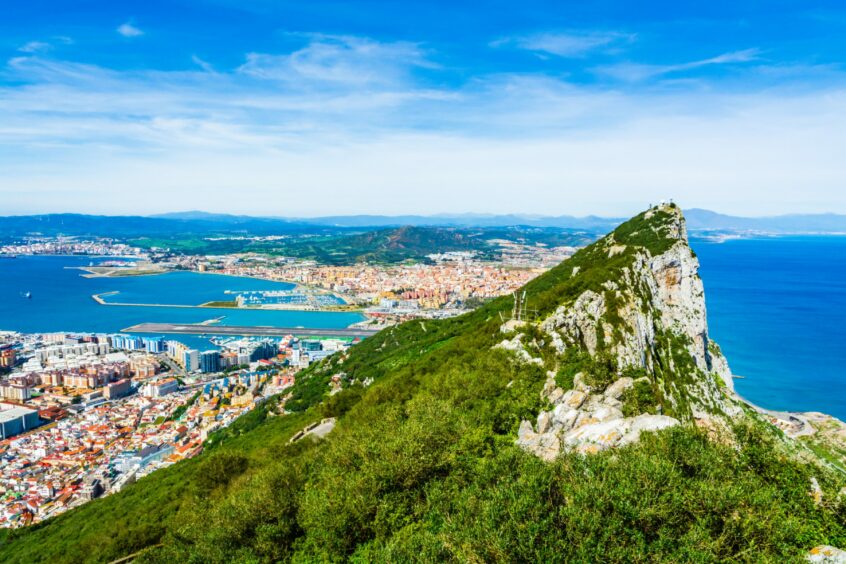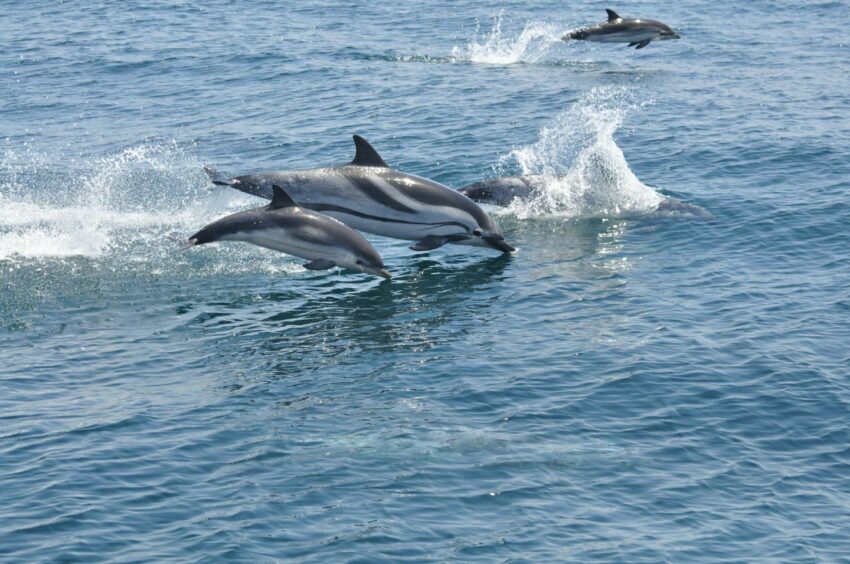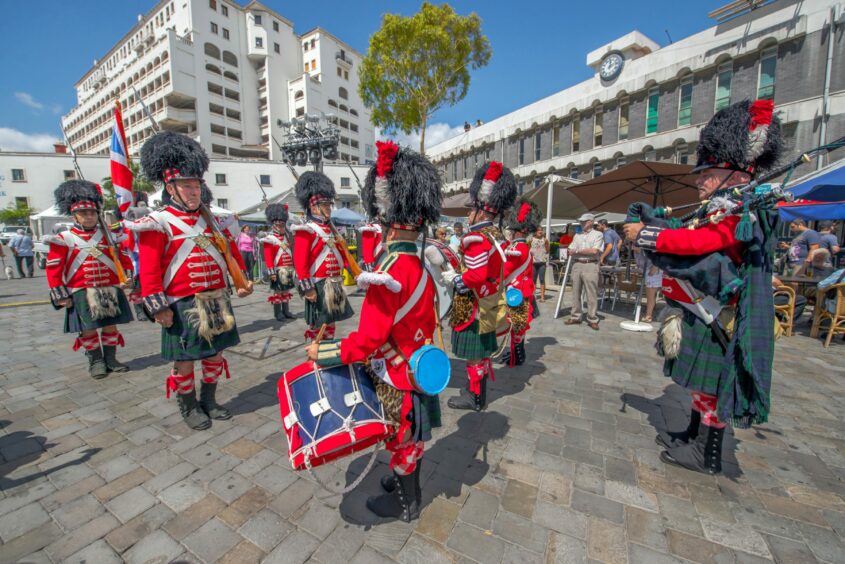
If you believe the ancient myths, the Rock of Gibraltar was formed when ancient God-botherer Hercules rustled some magical cattle via the Western Mediterranean.
Since then the limestone promontory has been a hangout in turn for holidaying Neanderthals, Moorish conquerors and red-tunicked British fusiliers merrily sticking two fingers up at Napoleon Bonaparte.
These days, if you ask a Gibraltarian cab driver, they’ll take you up one of the narrow roads to the peak to visit its most recent and most famous residents. Don’t, though.
Sure, you’ll see the Barbary Macaques: a delightful colony of the only wild monkeys on the European continent.
In fact they’re one of the main draws of this British Overseas Territory; yet it would make you the laziest primate on the Rock, even lazier than the apes lounging in the hot Iberian sunshine.
As a local guide explains on a winding hike to the summit, the famous monkeys are only one of the many fascinations packed onto the 2.6 square miles of this Africa-facing peninsula.
Above us the summit wears a downy quiff of cloud formed by the Levant Blanc, the local name for the easterly wind which blows in from the Atlantic and signals pleasant weather.
And so it is; at our destination we find several troops of apes mooching around the peak in the midday heat. It’s the type of warmth where there’s not much for a chimp to do, save glower at tourists who stare too long, and eye up their bags in case anyone’s unwisely brought a chocolate bar with them.
It’s illegal to feed these animals and, visit them on a warm afternoon, they don’t look too happy about that decision. In fact there are strong vibes of the episode of The Simpsons where Homer is given a diligent helper monkey who he subsequently corrupts with doughnuts and beer.
We leave the apes to their loafing, but it wasn’t our last encounter with them.
I couldn’t help but feel a little lazy myself on an eBike tour of Gibraltar on the morning of our arrival; it is, however, the best way to familiarise yourself with this pocket enclave.
You can mosey round Gibraltar in a few hours but why not let one of the very ecofriendly electric bicycles do the work for you? It’s like having a tiny Lance Armstrong operating the pedals on your behalf, meaning you can scoot around the joint in an hour or two.
The tour let’s you see how Gibraltar is layered with different influences.
It’s British first and foremost; the locals voted to reject shared sovereignty with Spain in 2002: 99% of the electorate were opposed and going by the folk I spoke to I’m surprised it was that low.
Yet for all the Union Jacks on lampposts, Her Majesty’s name adorning every other place of interest and the occasional pub promising cottage pie and chips, Gibraltar is a mellow, multicultural melange of a place.
Andalusian, Portuguese and Genoese architecture sits alongside British military fortifications converted into restaurants peddling food both local and imported.
There aren’t really specific quarters for each of the diverse populations either; everyone happily mingles and proud Gibraltarians accents range from Sicily to Barcelona to Loughborough.
In fact if you’re looking for a local dish then one which sums up the area is probably Menestra, a vegetable and pasta stew mixing different ingredients which changes depending on what family is making it; each has their own recipe.
Look south over the Straits of Gibraltar and you’ll see the other mountainous Pillar of Hercules, Jebel Musa, on the north shore of Morocco. You could head to Tangiers via daily ferry but instead I took a trip to see the Strait’s schools of bottlenose and striped dolphins.
Given this is the gateway to the Mediterranean and the Suez Canal, and the 7.7 nautical mile gap between Iberia and North Africa here is akin to the M8 at rush hour at times, the dolphins are game for weaving and frolicking off our prow.
We drape ourselves across the guardrails and cook in the sun. I can only imagine that, to the dolphins, we look, having spent lunchtime gorging ourselves on delicious seafood on the waterfront, like our own variety of lazy primate.
If all the heat is too much for you then the Rock of Gibraltar is home to a cooling network of tunnels, some formed naturally over the course of hundreds of thousands of years, and others formed unnaturally over the course of a couple of hundred years via the British military’s efforts to shore up this important strategic location.
You can visit the Great Siege Tunnels if hearing about army men digging holes is your thing but I’d recommend St Michael’s Cave which is an altogether more uncanny experience.
Mentioned by Homer (the Greek Poet, not the monkey-ruining dad in The Simpsons) the cave leads to a pit which was said to either be bottomless, or perhaps even lead to an underground route beneath the Strait all the way to North Africa.
The Barbary Macaques, it has been suggested, travelled from Africa to Gibraltar via this cave which conjures the image of intrepid spelunking monkeys and is therefore the origin story I personally prefer.
The walls of St Michael’s Cave are illuminated with breathtaking lightshows, the highlight of which is a towering vision on the rocks of an angel spreading its wings, accompanied by the swell of holy organ music.
I’m not religious but it left me slightly agog; I was all the more impressed when I found out in true Gibraltar mix-and-match fashion that the adjoining cave is an auditorium carved from limestone where Geordie funny woman Sarah Millican, who is her own type of awesome, had headlined the week previous.
After emerging blinking from the caves we were given another chance to meet the Rock’s most famous residents.
Most tourists see the monkeys when they’re at their most sedentary; they get a bit sleepy and grumpy after lunchtime, much like the rest of us. Monkey Talk Gibraltar (perhaps it should be called Gamut Of The Apes) offers a more exciting and intimate glimpse into their lives.
It is run by wildlife boffin Brian Gomila, Gibraltar’s only qualified primatologist, who took us into the wild olive groves on the sloping, shrubby side of the Rock as dusk fell; this is when the macaques descend from the peak to safer, sheltered territory.
The troop emerged from the forest and Brian delivered a fervid lecture which followed the flow of the altogether more lively apes’ behaviour: from territorial bickering, to reverential grooming, to lots and lots of monkey sex.
I initially thought being three feet away from a pair of rutting macaques was perhaps an intrusion but I suspect they were showing off.
Once they vacated the area, Brian had me prod the residual monkey ejaculate on the ground with a stick as part of an informative aside on the evolutionary advantages of certain types of primate semen. Luckily, my Menestra had settled by that point.
As the sun dipped below the glittering Mediterranean, we tracked the troop down to Windsor Bridge, a newly constructed pedestrian suspension overpass.
It was here the monkeys had a small spat (which we later called The Battle Of Windsor Bridge) which involved lots of screeching followed by reconciliatory mating in close proximity to our group.
This was mildly terrifying but also thrilling; sadly as a result Brian is going to change his tours slightly to put more distance between slack-jawed tourists and the animals going about their natural monkey business.
No matter, I’d return tomorrow to listen to Gomila. He remains keen to impress how the typical tourist monkey visit at the top of the Rock only gives a small glimpse into the lives of these fascinating creatures.
Like the rest of Gibraltar there’s a lot more going on than first appears; and visitors are of course welcome.
Unless your name is Napoleon, perhaps.
P.S. The road into Gibraltar gets closed down every time a plane lands at the territory’s airport.
Why? Well because the road into town is also the runway! The runway basically runs the whole width of Gibraltar alongside the border with Spain and you can walk right across it when there are no planes coming or going.
Factfile
Manchester-Gibraltar EasyJet return flights from £60pp, Edinburgh-Gibraltar from £133pp. The Eliott Hotel, from £140 per room, per night.

Enjoy the convenience of having The Sunday Post delivered as a digital ePaper straight to your smartphone, tablet or computer.
Subscribe for only £5.49 a month and enjoy all the benefits of the printed paper as a digital replica.
Subscribe

